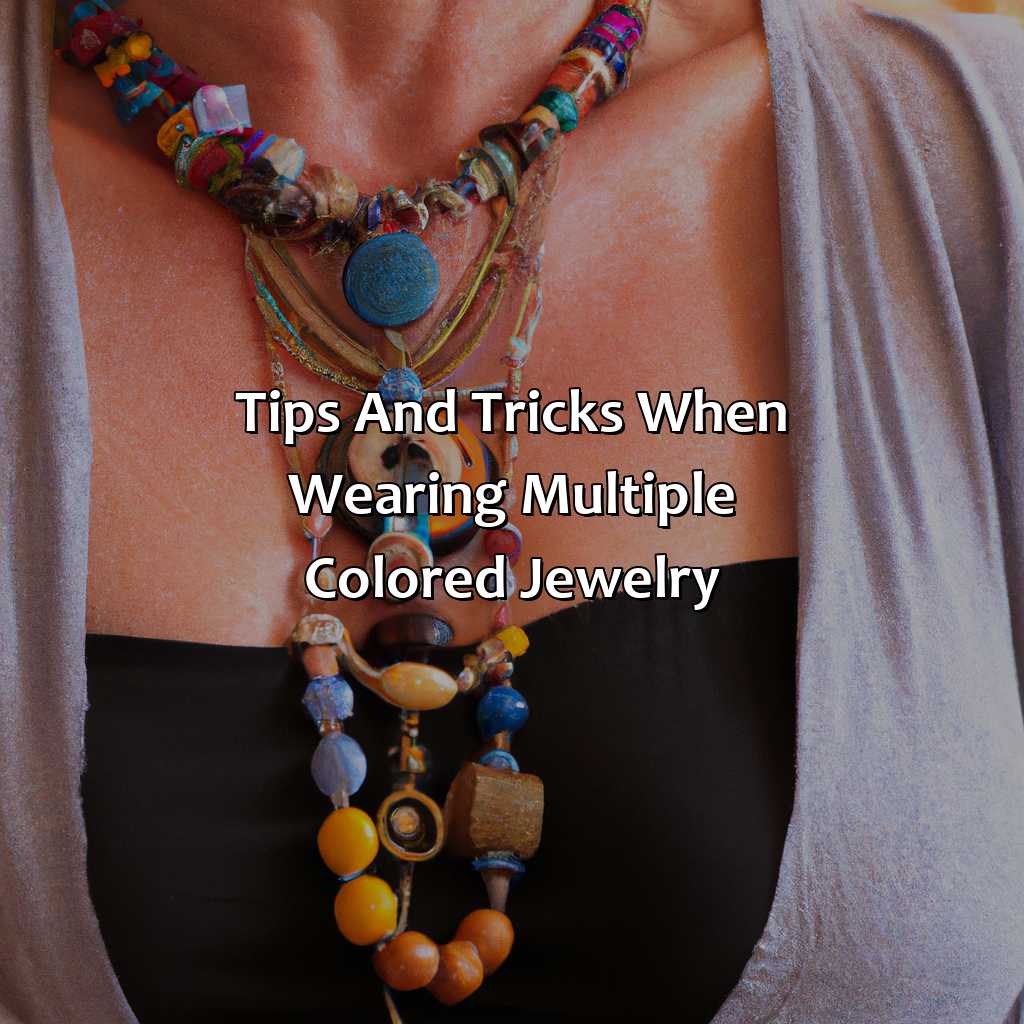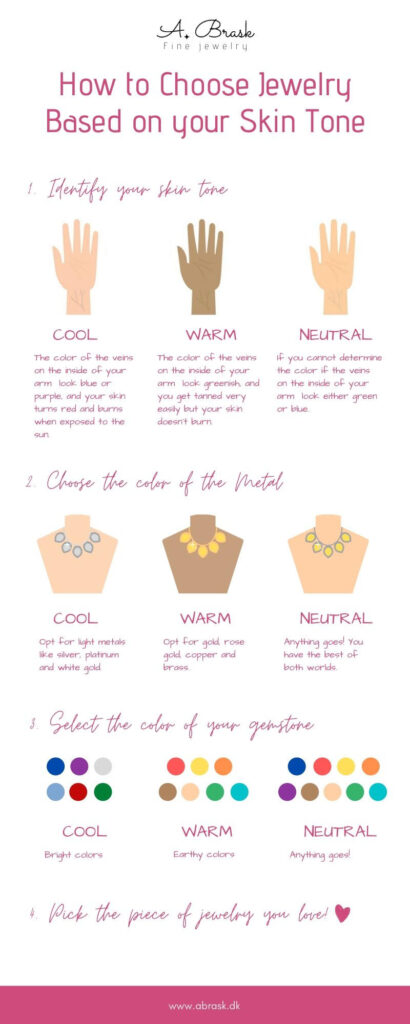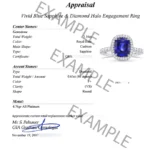Choosing the right jewelry can significantly elevate your style, transforming an ordinary outfit into a memorable ensemble. But with a dazzling array of colors, metals, and styles available, selecting the perfect pieces can feel overwhelming. This comprehensive guide delves into the art of color coordination in jewelry, helping you navigate the world of gemstones and metals to find the perfect complements to your wardrobe and personal style. Understanding color theory and its application to accessorizing is crucial; it’s not just about matching, but about creating visual harmony and emphasizing your best features. We’ll explore the impact of different colors on your complexion, the relationship between jewelry and clothing, and the power of strategic color choices to enhance your overall appearance. From understanding the psychology of color in fashion to mastering practical tips for everyday styling, this guide provides a holistic approach to selecting jewelry that truly reflects your personality and enhances your natural beauty. Whether you’re a seasoned fashionista or just starting to explore the world of accessories, this guide will equip you with the knowledge and confidence to make informed choices that will elevate your style game to new heights. Let’s embark on this colorful journey together!
Understanding Your Skin Tone
The foundation of choosing the right jewelry color lies in understanding your skin tone. Determining whether you have a warm, cool, or neutral undertone is paramount. Warm undertones often have golden or yellowish hues, while cool undertones exhibit pinkish or bluish undertones. Neutral undertones fall somewhere in between. Identifying your undertone can be done through various methods, including observing the veins on your inner wrist (blue for cool, green for warm), or by seeing how gold and silver jewelry look against your skin. Gold generally complements warm undertones, while silver flatters cool undertones. Those with neutral undertones can often wear both metals successfully.

Determining Your Undertone
Many find it helpful to look at the color of your natural hair. Those with naturally golden or reddish hair often have warm undertones, while those with ash blonde or dark brown hair may have cool undertones. The color of your eyes can also be a helpful indicator. For example, green or hazel eyes often suggest warm undertones, while blue or grey eyes might indicate cool undertones.
Testing with Jewelry
A simple test involves wearing both gold and silver jewelry. Which metal makes your skin appear brighter and more radiant? That’s a good indication of your undertone. If both look equally good, you likely have a neutral undertone.
Consider consulting a professional makeup artist or stylist for a definitive assessment of your skin tone if you’re unsure. They can provide expert guidance and help you understand the nuances of your complexion.
Color Psychology and Jewelry
The colors we choose to wear and accessorize with can significantly impact our mood and how others perceive us. Red, for instance, is often associated with passion and energy, while blue evokes feelings of calmness and serenity. This color psychology extends to jewelry choices. Wearing vibrant gemstones like rubies or emeralds can project confidence and boldness, while delicate pastel jewelry can convey a sense of gentleness and sophistication. The psychological effect of color is subtle but powerful. Choosing jewelry colors that align with your desired mood or the message you want to convey can enhance your self-expression and overall presence.
The Power of Color Combinations
Combining different colors in your jewelry can create striking visual effects. For example, pairing cool blues and greens with warmer gold tones can create a balanced and harmonious look. Similarly, contrasting colors can create a bold statement. Think of a vibrant turquoise necklace paired with a silver chain – the contrast adds visual interest and dynamism.
Case Study: The Impact of Color on Perception
Studies have shown that individuals wearing warmer-toned jewelry are often perceived as more approachable and friendly, while those wearing cooler-toned jewelry might be seen as more sophisticated and reserved. However, these are generalizations, and individual preferences and style choices ultimately play a more significant role.
Ultimately, the most important factor is choosing jewelry colors that make you feel confident and comfortable. Experiment with different combinations and find what works best for you.
Matching Jewelry to Your Outfit
The interplay between your clothing and jewelry is crucial for a polished look. While you don’t always need to match your jewelry exactly to your outfit, ensuring harmony is key. Consider the colors and patterns in your clothing. If you’re wearing a solid-colored outfit, you have more freedom to experiment with bolder jewelry choices. However, if your outfit features intricate patterns or multiple colors, simpler, more neutral jewelry might be a better choice to avoid clashing.
Harmonizing Colors
Using the color wheel can be a valuable tool. Complementary colors (opposite each other on the wheel) create a visually striking contrast. Analogous colors (adjacent to each other) offer a more harmonious and subtle look. For example, a green dress paired with turquoise jewelry (analogous colors) creates a soothing effect, while a blue dress paired with orange jewelry (complementary colors) creates a bold and energetic statement.
Metal Choices
The metal of your jewelry should also complement your outfit. Gold jewelry pairs well with warm-toned outfits and earthy colors, while silver jewelry complements cool-toned outfits and brighter colors. Mixing metals can work, but it requires careful consideration of the overall style and to avoid appearing cluttered.
| Outfit Color | Recommended Jewelry Metal | Recommended Gemstone Colors |
|---|---|---|
| Warm tones (reds, oranges, yellows) | Gold | Rubies, Topaz, Amber |
| Cool tones (blues, greens, purples) | Silver, Platinum | Sapphires, Emeralds, Amethyst |
| Neutrals (black, white, beige) | Gold or Silver | Diamonds, Pearls |
Jewelry Styles and Color Coordination
Different jewelry styles lend themselves to different color palettes. Delicate, minimalist jewelry often looks best in subtle, neutral colors or with a single, striking gemstone. Bold, statement pieces, on the other hand, can handle more vibrant and contrasting colors. Consider the overall style of your jewelry and how it complements your personal aesthetic. For example, a bohemian style might incorporate earthy tones and natural materials, while a classic style might favor timeless elegance with diamonds or pearls.
Choosing Gemstones
The vast array of gemstones offers endless possibilities for color coordination. Understanding the properties of different gemstones can help you choose pieces that complement your skin tone and overall style. For example, rubies are known for their vibrant red hue, while emeralds are prized for their deep green color. Sapphires come in a variety of colors, including blue, pink, and yellow.
Layering Necklaces
Layering necklaces is a popular trend that allows for creative color combinations. When layering, consider the lengths of the necklaces and the colors of the pendants. Mixing metals can add visual interest, but make sure the styles complement each other. Avoid layering too many necklaces, as this can create a cluttered look.
Remember that the most important aspect of jewelry selection is personal preference. While understanding color theory and skin tones can guide your choices, ultimately, the best jewelry is the jewelry that makes you feel confident and beautiful.
Summary
Choosing the right color jewelry is a multifaceted process that involves understanding your skin tone, utilizing color psychology, and harmonizing your jewelry with your outfit. Identifying your skin’s undertone – warm, cool, or neutral – is the first step. This determines whether gold or silver jewelry will complement your complexion best. Understanding color theory, particularly complementary and analogous colors, can help you create visually appealing combinations. Consider the overall style of your jewelry and how it interacts with your outfit. Statement pieces can handle bolder color choices, while minimalist jewelry often benefits from more subdued tones. Experiment with different combinations, and don’t be afraid to break the rules and express your unique personality through your jewelry choices. The ultimate goal is to choose jewelry that enhances your natural beauty and makes you feel confident and radiant.
- Skin tone analysis is crucial for choosing jewelry metals.
- Color psychology influences how your jewelry is perceived.
- Outfit coordination ensures a harmonious overall look.
- Gemstone selection offers a wide range of color options.
- Personal style is the ultimate guiding factor.
By thoughtfully considering these factors, you can confidently select jewelry that elevates your style and reflects your unique personality.
Frequently Asked Questions (FAQs)
What if I can’t decide between gold and silver?
If you find yourself equally drawn to both gold and silver, you likely have a neutral undertone. This is fantastic news, as it gives you the freedom to wear both metals. Experiment with different combinations to see what you like best. You can even mix gold and silver in a single outfit for a contemporary look, ensuring the styles are complementary.
How can I incorporate colored gemstones into my everyday jewelry?
Start by choosing gemstones that complement your skin tone and personal style. Consider incorporating them into small, everyday pieces, such as stud earrings or a delicate pendant necklace. You can also experiment with layering necklaces featuring different colored gemstones for a more vibrant look. Remember that subtle pops of color can be just as effective as bold statements.
What are some tips for choosing jewelry for a special occasion?
For special occasions, you can be bolder with your jewelry choices. Consider statement pieces with vibrant gemstones or intricate designs. Ensure your jewelry complements your outfit without overpowering it. The occasion itself should inform your jewelry selection. A formal event might call for elegant diamonds or pearls, while a more casual event might allow for more playful and colorful options.
How can I avoid looking over-accessorized?
Start by focusing on one or two key pieces of jewelry. Avoid wearing too many necklaces, bracelets, or rings at once. Choose pieces that complement each other in style and color. Consider the overall silhouette of your outfit and choose jewelry that enhances it without overwhelming it. Less is often more when it comes to accessorizing.
Is it okay to mix different metal colors in one outfit?
Yes, absolutely! Mixing metals is a popular trend, but it requires a bit more consideration. Ensure the styles of the jewelry pieces complement each other, and avoid mixing too many different metals at once. For example, a rose gold watch paired with a silver bracelet can create a stylish and modern look. However, mixing too many different colors might look cluttered. Start with small combinations and see what works best for you.



